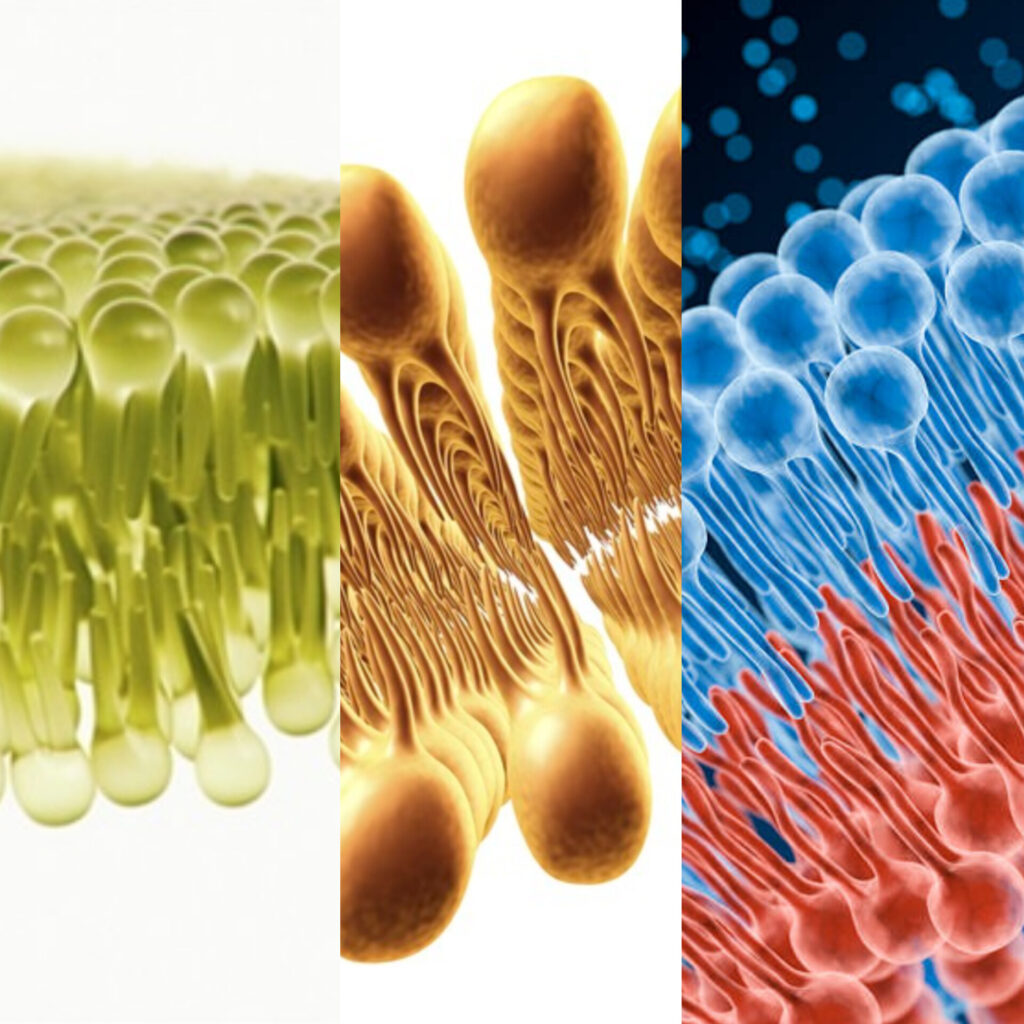
1. Introduction to Lipids
- Lipids are a diverse group of organic molecules that are insoluble in water but soluble in non-polar solvents (like ether, chloroform).
- They include:
- Fats and oils
- Phospholipids
- Steroids (including cholesterol and sex hormones)
- Waxes
Functions:
- Major source of energy
- Structural components of cell membranes
- Serve as signaling molecules in biological systems
2. Fatty Acids
Definition:
- Organic molecules consisting of a carboxyl group (-COOH) attached to a long hydrocarbon chain.
- Essential components of lipids involved in energy storage, membrane structure, and cellular signaling.
3. Classification of Fatty Acids
A. Based on Saturation:
- Saturated Fatty Acids (SFA):
- No double bonds
- Solid at room temperature
- Example: Palmitic acid, Stearic acid
- Unsaturated Fatty Acids:
- One or more double bonds
- Monounsaturated Fatty Acids (MUFA):
- One double bond
- Found in olive oil, avocado, nuts
- Example: Oleic acid
- Polyunsaturated Fatty Acids (PUFA):
- Two or more double bonds
- Found in fish oil, flaxseeds, walnuts
- Examples: Linoleic acid, Alpha-linolenic acid
B. Based on Essentiality:
- Essential Fatty Acids (EFA):
- Cannot be synthesized by the body; must be obtained from the diet
- Examples:
- Linoleic acid (Omega-6)
- Alpha-linolenic acid (Omega-3)
- Non-Essential Fatty Acids:
- Can be synthesized by the body
4. Clinical Significance
Essential Fatty Acids:
- Omega-3 (ALA, EPA, DHA):
- Anti-inflammatory
- Supports heart and brain health
- Omega-6 (Linoleic, Arachidonic acid):
- Supports skin, immune function
- Excessive intake may cause inflammation
Deficiency may cause:
- Dry skin
- Poor wound healing
- Cognitive decline
Monounsaturated Fats (MUFA):
- Increase HDL (good cholesterol), reduce LDL (bad cholesterol)
- Found in olive oil, avocados, nuts
Polyunsaturated Fats (PUFA):
- Important for brain function and cardiovascular health
- Includes Omega-3 and Omega-6
Trans Fatty Acids:
- Unsaturated fats with at least one trans double bond
- Found in processed foods, margarine, baked goods
- Associated with:
- Increased LDL, decreased HDL
- Inflammation, diabetes, heart disease
WHO recommends eliminating trans fats from diets for better public health
5. Digestion, Absorption & Metabolism of Lipids
A. Digestion of Lipids
- Mouth:
- Lingual lipase (active mainly in infants)
- Minimal digestion
- Stomach:
- Gastric lipase
- Acts mainly on short- and medium-chain triglycerides
- Small Intestine:
- Bile salts (from liver/gallbladder) emulsify fats
- Pancreatic lipase hydrolyzes triglycerides into monoglycerides and free fatty acids
- Colipase stabilizes pancreatic lipase
- Phospholipase A2 digests phospholipids
- Cholesterol esterase hydrolyzes cholesterol esters
B. Absorption of Lipids
- Lipid digestion products form micelles with bile salts
- Absorbed by enterocytes in the intestine
- Inside enterocytes:
- Lipids are re-esterified
- Packaged into chylomicrons
- Chylomicrons enter lymph, then bloodstream
- Short- and medium-chain fatty acids directly enter portal circulation
6. Lipid Transport
- Chylomicrons (from intestines): Transport dietary triglycerides to tissues
- VLDL (Very Low-Density Lipoprotein): Carries triglycerides from liver to tissues
- LDL (Low-Density Lipoprotein): Delivers cholesterol to cells (high levels = atherosclerosis)
- HDL (High-Density Lipoprotein): Removes excess cholesterol, returns to liver
7. Lipid Utilization
- β-oxidation (Fatty Acid Breakdown):
- Occurs in mitochondria
- Produces acetyl-CoA, NADH, and FADH₂ (used for ATP synthesis)
- Ketogenesis (in Liver):
- Happens during fasting or diabetes
- Produces ketone bodies (acetoacetate, β-hydroxybutyrate) for energy
- Lipogenesis (Fat Synthesis):
- Excess carbohydrates → converted into fats
- Occurs mainly in liver and adipose tissue
